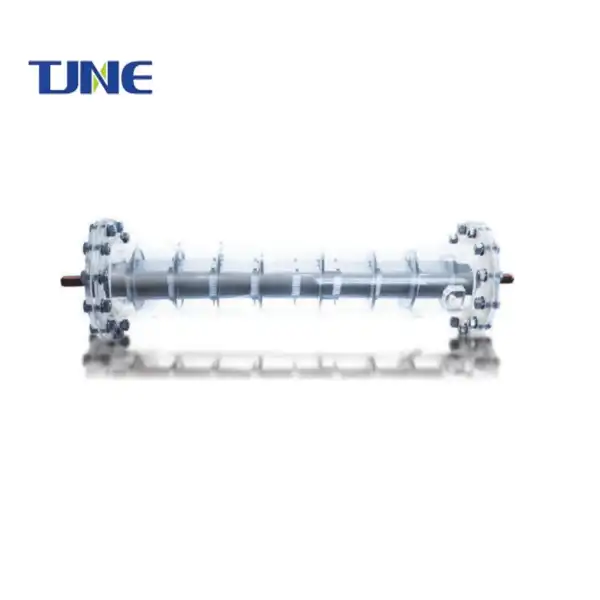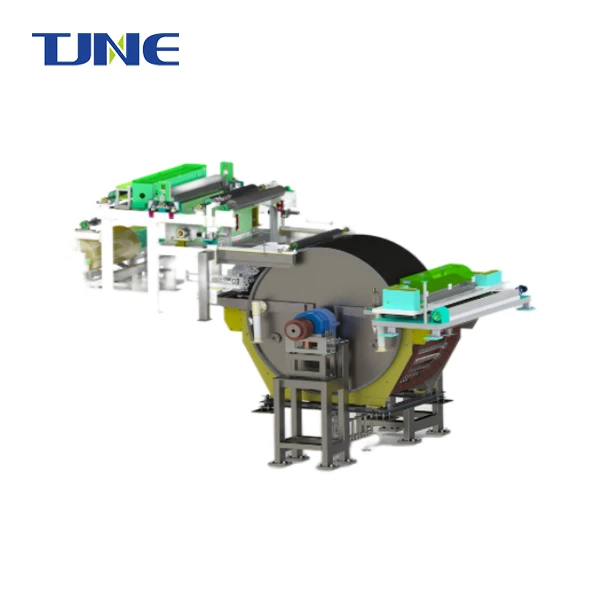- English
- French
- German
- Portuguese
- Spanish
- Russian
- Japanese
- Korean
- Arabic
- Greek
- German
- Turkish
- Italian
- Danish
- Romanian
- Indonesian
- Czech
- Afrikaans
- Swedish
- Polish
- Basque
- Catalan
- Esperanto
- Hindi
- Lao
- Albanian
- Amharic
- Armenian
- Azerbaijani
- Belarusian
- Bengali
- Bosnian
- Bulgarian
- Cebuano
- Chichewa
- Corsican
- Croatian
- Dutch
- Estonian
- Filipino
- Finnish
- Frisian
- Galician
- Georgian
- Gujarati
- Haitian
- Hausa
- Hawaiian
- Hebrew
- Hmong
- Hungarian
- Icelandic
- Igbo
- Javanese
- Kannada
- Kazakh
- Khmer
- Kurdish
- Kyrgyz
- Latin
- Latvian
- Lithuanian
- Luxembou..
- Macedonian
- Malagasy
- Malay
- Malayalam
- Maltese
- Maori
- Marathi
- Mongolian
- Burmese
- Nepali
- Norwegian
- Pashto
- Persian
- Punjabi
- Serbian
- Sesotho
- Sinhala
- Slovak
- Slovenian
- Somali
- Samoan
- Scots Gaelic
- Shona
- Sindhi
- Sundanese
- Swahili
- Tajik
- Tamil
- Telugu
- Thai
- Ukrainian
- Urdu
- Uzbek
- Vietnamese
- Welsh
- Xhosa
- Yiddish
- Yoruba
- Zulu
What are the Environmental Considerations When Using Titanium Electrodes for Nickel-Cobalt?
The use of titanium electrodes in the electrodeposition of nickel-cobalt alloys has gained significant attention in recent years due to their unique properties and potential environmental benefits. As industries strive to adopt more sustainable practices, understanding the environmental implications of using titanium electrodes in this process becomes crucial. This blog post delves into the various environmental considerations associated with employing titanium electrodes for nickel-cobalt electrodeposition, exploring their impact on efficiency, potential risks, and their role in reducing the carbon footprint of production processes.
How do titanium electrodes impact the efficiency of nickel-cobalt electrodeposition?
The efficiency of nickel-cobalt electrodeposition is a critical factor in determining the overall environmental impact of the process. Titanium electrodes have shown promising results in enhancing this efficiency, which can lead to reduced energy consumption and waste generation.
Titanium electrodes offer several advantages that contribute to improved efficiency in nickel-cobalt electrodeposition:
1. Electrical conductivity: Titanium, especially when coated with precious metals or metal oxides, exhibits excellent electrical conductivity. This property allows for a more uniform current distribution across the electrode surface, resulting in a more even deposition of nickel-cobalt alloys. The improved current distribution leads to better material utilization and reduces the likelihood of localized high-current density areas that can cause unwanted side reactions or poor deposit quality.
2. Corrosion resistance: One of the most significant advantages of titanium electrodes is their exceptional corrosion resistance. Unlike traditional electrode materials, titanium can withstand harsh electrolyte conditions without degrading. This durability translates to longer electrode lifespans, reducing the frequency of replacements and minimizing production downtime. The corrosion resistance also prevents contamination of the electrolyte solution, ensuring a purer nickel-cobalt deposit and reducing the need for frequent electrolyte replacements.
3. Surface area and stability: Titanium electrodes can be manufactured with various surface treatments and coatings to increase their effective surface area. A larger surface area promotes better mass transfer and reaction kinetics, leading to improved deposition rates and efficiency. Additionally, the stability of titanium electrodes under varying pH conditions and temperature ranges allows for more flexible operating parameters, potentially optimizing the electrodeposition process for different nickel-cobalt alloy compositions.

4. Hydrogen evolution suppression: In aqueous electrodeposition processes, the evolution of hydrogen gas at the cathode is a common side reaction that reduces current efficiency. Titanium electrodes, particularly when coated with certain catalytic materials, can help suppress hydrogen evolution, directing more of the applied current towards the desired nickel-cobalt deposition reaction. This suppression not only improves efficiency but also reduces the risk of hydrogen embrittlement in the deposited alloy.
5. Energy savings: The combined effects of improved conductivity, corrosion resistance, and reaction efficiency contribute to significant energy savings in the electrodeposition process. Lower energy consumption not only reduces operational costs but also decreases the carbon footprint associated with nickel-cobalt production, aligning with environmental sustainability goals.
6. Reduced waste generation: Enhanced efficiency in the electrodeposition process leads to better material utilization and fewer rejected products due to poor quality deposits. This reduction in waste generation is a crucial environmental consideration, as it minimizes the need for resource-intensive recycling processes and reduces the volume of potentially hazardous waste materials requiring disposal.
By improving the efficiency of nickel-cobalt electrodeposition, titanium electrodes contribute to a more environmentally friendly production process. The reduced energy consumption, improved material utilization, and decreased waste generation all align with sustainable manufacturing principles, making titanium electrodes an attractive option for industries seeking to minimize their environmental impact.
What are the potential environmental risks of using titanium electrodes in electroplating?
While titanium electrodes offer numerous benefits in nickel-cobalt electrodeposition, it is essential to consider potential environmental risks associated with their use. Understanding these risks allows for better mitigation strategies and informed decision-making in industrial applications.
1. Titanium production impact: The production of titanium itself carries environmental implications. Titanium extraction and processing are energy-intensive processes that can contribute to greenhouse gas emissions. The Kroll process, commonly used for titanium production, involves the reduction of titanium tetrachloride with magnesium, which requires significant energy input and produces chlorine as a byproduct. While the long lifespan of titanium electrodes may offset this initial environmental cost over time, it is an important factor to consider in the overall environmental assessment.
2. Coating materials: Many titanium electrodes used in electroplating are coated with precious metals or metal oxides to enhance their performance. The production and application of these coating materials can have environmental impacts, including resource depletion and potential emissions during the coating process. Additionally, some coating materials may contain toxic elements that require careful handling and disposal.
3. End-of-life considerations: Although titanium electrodes have a long lifespan, they eventually require replacement. The disposal or recycling of used titanium electrodes presents environmental challenges. While titanium is recyclable, the presence of coatings and contaminants from the electroplating process can complicate recycling efforts. Proper disposal methods must be employed to prevent potential soil or water contamination from residual plating chemicals or coating materials.
4. Chemical use in surface preparation: To maintain optimal performance, titanium electrodes often require periodic surface treatments or reactivation. These processes may involve the use of strong acids or other chemicals that, if not properly managed, could pose risks to the environment through accidental releases or improper disposal.
5. Potential for titanium nanoparticle release: Recent studies have raised concerns about the potential release of titanium nanoparticles from electrodes during the electroplating process. These nanoparticles, if released into the environment, could have unknown ecological impacts. While the risk is generally considered low due to the stability of titanium, it is an area that requires ongoing research and monitoring.
While these potential risks exist, it's important to note that many can be mitigated through proper design, operation, and management practices. The use of titanium electrodes in nickel-cobalt electrodeposition, when implemented responsibly, can still offer net environmental benefits compared to traditional electrode materials. Ongoing research and development in this field continue to address these challenges, aiming to further improve the environmental profile of titanium electrodes in industrial applications.
Can titanium electrodes reduce the carbon footprint of nickel-cobalt production?
The potential for titanium electrodes to reduce the carbon footprint of nickel-cobalt production is a topic of significant interest in the pursuit of more sustainable manufacturing processes. By examining various aspects of the production cycle, we can assess how titanium electrodes contribute to carbon footprint reduction and identify areas for further improvement.
1. Energy efficiency improvements: One of the primary ways titanium electrodes can reduce the carbon footprint of nickel-cobalt production is through enhanced energy efficiency. The superior electrical conductivity and durability of titanium electrodes allow for more efficient current utilization in the electrodeposition process. This efficiency translates to lower energy consumption per unit of nickel-cobalt alloy produced. In many industrial settings, energy usage is directly tied to carbon emissions, especially when fossil fuel-based electricity is used. By reducing the overall energy demand, titanium electrodes contribute to a lower carbon footprint for the entire production process.
2. Longevity and reduced replacement frequency: Titanium electrodes exhibit exceptional corrosion resistance and mechanical stability, leading to significantly longer operational lifespans compared to traditional electrode materials. This durability means fewer replacements are needed over time, reducing the carbon emissions associated with the production, transportation, and installation of new electrodes. The extended lifespan of titanium electrodes also minimizes production downtime for electrode replacement, further contributing to overall process efficiency and reduced energy waste.
3. Improved product quality and reduced waste: The use of titanium electrodes often results in higher quality nickel-cobalt deposits with more consistent properties. This improvement in product quality leads to fewer rejected parts and less waste generation. Reduced waste not only conserves raw materials but also decreases the energy and resources required for recycling or disposing of defective products. By minimizing waste throughout the production cycle, titanium electrodes indirectly contribute to a lower carbon footprint for the entire manufacturing process.

4. Optimization of electrolyte composition: Titanium electrodes can operate effectively in a wider range of electrolyte compositions compared to some traditional electrode materials. This flexibility allows for the optimization of electrolyte formulations to reduce the need for frequent bath replacements or additions. Less frequent electrolyte maintenance means reduced chemical consumption and waste generation, both of which contribute to a lower overall carbon footprint for the production process.
5. Enhanced current efficiency: Titanium electrodes, especially when coated with suitable catalytic materials, can significantly improve current efficiency in the electrodeposition process. Higher current efficiency means that a larger proportion of the applied electrical current is used for the desired nickel-cobalt deposition reaction, rather than being lost to side reactions such as hydrogen evolution. This improvement not only saves energy but also reduces the production of unwanted byproducts, further minimizing the carbon footprint of the process.
While titanium electrodes offer significant potential for reducing the carbon footprint of nickel-cobalt production, it's important to note that the extent of this reduction depends on various factors, including the specific production setup, energy sources, and overall process management. A comprehensive life cycle assessment would be necessary to quantify the exact carbon footprint reduction in any given application.
Moreover, ongoing research and development in this field continue to uncover new ways to enhance the environmental benefits of titanium electrodes. Future innovations may include improved coating technologies, novel electrode designs for even greater efficiency, and advanced recycling methods to further minimize the environmental impact of electrode production and disposal.
In conclusion, titanium electrodes represent a promising technology for reducing the carbon footprint of nickel-cobalt production. Their ability to improve energy efficiency, reduce waste, and enhance overall process performance contributes significantly to more sustainable manufacturing practices. As industries continue to prioritize environmental responsibility, the role of titanium electrodes in achieving lower carbon footprints is likely to become increasingly important.
If you are interested in the products of Xi'an Taijin New Energy & Materials Sci-Tech Co., Ltd., please contact yangbo@tjanode.com.
References
1. Zhang, Y., & Liew, K. M. (2021). "Titanium and titanium alloy electrodes for energy storage applications." Journal of Materials Chemistry A, 9(15), 9369-9394.
2. Walsh, F. C., & Ponce de León, C. (2018). "Progress in electrochemical flow reactors for laboratory and pilot scale processing." Electrochimica Acta, 280, 121-148.
3. Bard, A. J., & Faulkner, L. R. (2001). "Electrochemical Methods: Fundamentals and Applications" (2nd ed.). John Wiley & Sons.
4. Schlesinger, M., & Paunovic, M. (Eds.). (2010). "Modern Electroplating" (5th ed.). John Wiley & Sons.
5. Kelsall, G. H., & Yin, Q. (2020). "Electrochemical Engineering and Energy Sustainability." Sustainability, 12(2), 592.
6. Chen, Q., & Luo, L. (2018). "Fabrication of porous titanium with directional pores for biomedical applications." Materials Science and Engineering: C, 92, 958-966.
7. Trasatti, S. (2000). "Electrocatalysis: understanding the success of DSA®." Electrochimica Acta, 45(15-16), 2377-2385.
8. Gabe, D. R. (2005). "The role of hydrogen in metal electrodeposition processes." Journal of Applied Electrochemistry, 35(5), 465-469.
9. Simonsen, S. B., Chorkendorff, I., Dahl, S., Skoglundh, M., Sehested, J., & Helveg, S. (2010). "Direct observations of oxygen-induced platinum nanoparticle ripening studied by in situ TEM." Journal of the American Chemical Society, 132(23), 7968-7975.
10. Martins, P. M., Gomes, C., Silva, G. V., & Lanceros-Méndez, S. (2018). "Electroactive polymers as membranes for next-generation batteries: A comprehensive review." Energy Storage Materials, 11, 82-105.
Related Industry Knowledge
- How Can an Electrodeposited Titanium Electrode Improve the Performance of Nickel-Cobalt Batteries?
- How Do Titanium Electrodes Enhance the Nickel And Cobalt Electrodeposition Process?
- What are the Benefits of Using Titanium Electrodes in the Electrodeposition Process for Nickel And Cobalt?
- What are the Typical Applications for Nickel-Cobalt Alloys Electrodeposited on Titanium Electrodes?
- Can Titanium Electrodes Help Reduce the Need for Pool Chemicals?
- How Does Titanium Anodes Enhance Nickel And Cobalt Electrowinning?












